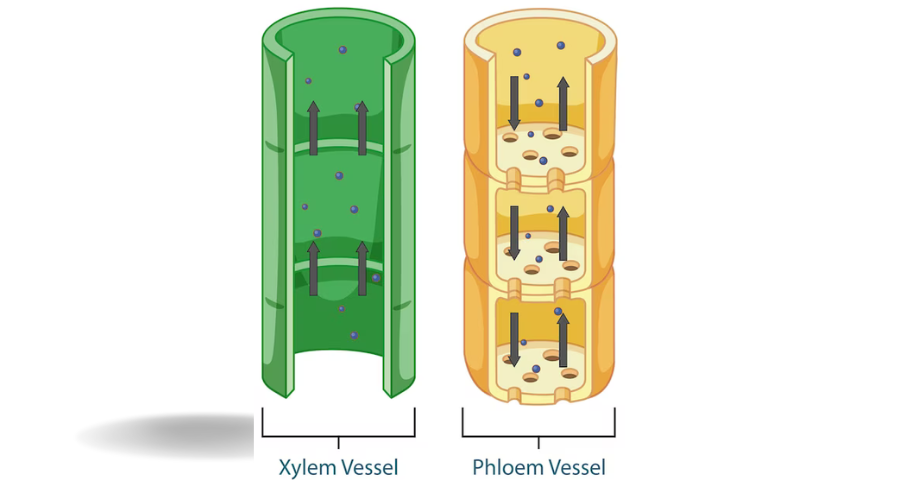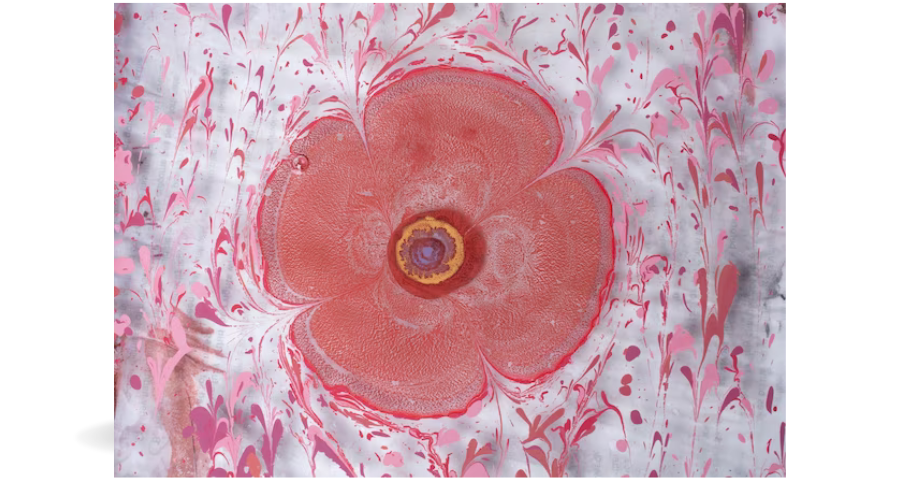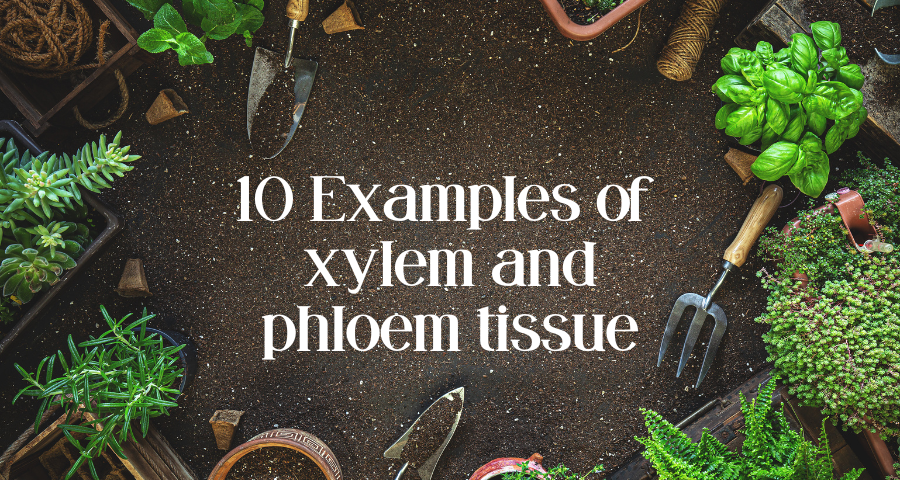In this article, I will tell you about the most common examples of xylem and phloem tissue. Plants are complex organisms with complex anatomical structures that work together to ensure their survival. One of the most crucial components of plant anatomy is the xylem and phloem tissue, which is responsible for transporting essential substances throughout the plant. These tissues play a critical role in the plant’s ability to absorb water and nutrients, distribute them to different parts of the plant, and remove waste products.
In this piece, we will explore the significance of xylem and phloem tissues in plants, highlighting their occurrence in different plant species and everyday applications. Appreciating the importance of these tissues is critical to understanding how plants work and how they are utilized in fields ranging from agriculture and medicine to environmental conservation.
Concept of Xylem and Phloem Tissue
Xylem is the plant tissue responsible for the transportation of water and minerals from the roots to the rest of the plant. It consists of various cell types, including:
- Tracheary elements like vessel elements and tracheids.
- Xylem parenchyma, which supports storage and lateral transport.
- Xylem fibers offer structural support.
Phloem, on the other hand, carries the products of photosynthesis, such as sugars and other nutrients, from the leaves to different parts of the plant. The primary components of phloem include:
- Sieve tube elements are responsible for the transport of nutrients.
- Companion cells, which support sieve tube function.
- Phloem parenchyma for storage.
- Phloem fibers for structural strength.

Examples of Xylem Tissue
Examples of Xylem Tissue are given below,
1. Mighty Oak Trees
Oak trees, with their majestic stature and robust trunks, owe their grandeur to the intricate network of xylem tissue within. This tissue functions as a hydraulic system, efficiently ferrying water and essential minerals from the roots to the uppermost branches. The longevity and resilience of oak trees are a testament to the prowess of xylem tissue.
2. Towering Pine Trees
Pine trees, often found in rugged terrains, rely heavily on their xylem tissue to thrive in challenging environments. This tissue acts as a lifeline, ensuring a constant supply of water and nutrients to support their growth, even in the harshest of conditions.
3. Sunflowers: Reaching for the Sky
Sunflowers, known for their cheerful demeanor and impressive size, harness the power of xylem tissue to stand tall and vibrant. Through this remarkable tissue, sunflowers transport water and nutrients to their colossal petals and leaves, allowing them to bask in the sun’s glory.
4. Grapevines: Crafting Fine Wines
The art of winemaking owes a debt to grapevines and their phloem tissue. Xylem tissue, in particular, is responsible for transporting water and nutrients to the grape clusters. This ensures that the grapes receive the nourishment they need to ripen into the flavorful fruits used in winemaking.
5. Bamboo: Nature’s Fast-Grower
Bamboo, prized for its rapid growth and versatility, possesses a formidable xylem tissue system. This tissue enables bamboo to shoot skyward in record time, making it a sustainable and valuable resource in various industries.

Examples of Phloem Tissue
Examples of Phloem Tissue are given below,
1. Sugar Maple Trees: Liquid Gold Producers
The enchanting world of maple syrup production unfolds thanks to the phloem tissue in sugar maple trees. This tissue transports the sap laden with sugars from the leaves to other parts of the tree, including the roots. The result is the delectable maple syrup that graces our pancakes.
2. Citrus Trees: Bursting with Flavor
Citrus trees, including oranges, lemons, and grapefruits, rely on phloem tissue to transport sugars to their fruit, infusing them with the delightful taste we cherish. It’s the phloem tissue that transforms ordinary citrus fruits into juicy, tangy delights.
3. Sugar Cane: Sweet Bounty
Sugar cane, a global sugar production staple, showcases the power of phloem tissue. This tissue transports the sugar synthesized in the leaves down to the stem, where it accumulates in high concentrations. It’s then harvested for a myriad of sugar-based products that sweeten our lives.
4. Tomato Plants: Red and Ripe
In the world of culinary delights, tomatoes stand out, and phloem tissue plays a pivotal role in their journey from flower to fruit. This tissue ensures the sugars produced during photosynthesis are distributed efficiently to the developing fruit, resulting in the plump, red tomatoes we enjoy in salads and sauces.
5. Pumpkins: Icons of Fall
The iconic pumpkins of autumn owe their large, round stature to phloem tissue. This tissue diligently transports nutrients to the growing fruit, enabling pumpkins to reach their full potential. They become essential ingredients in various seasonal dishes.

Examples of Xylem and Phloem Tissue in Everyday Life
Xylem and phloem tissue aren’t just essential for plant survival; they also find their way into various everyday products:
- Wood: The primary component of wooden furniture and structures.
- Paper: Derived from wood pulp, paper relies on xylem fibers for its structure.
- Cotton and Linen: Natural fabrics are made from plant fibers, primarily phloem fibers.
- Maple Syrup: Collected from the xylem of maple trees, this delicious syrup is a prime example of the role of the xylem in transporting sap.
- Sugarcane: A major source of sugar, sugarcane relies on phloem to transport sugars from the leaves to other plant parts.
- Tea and Coffee: Both beverages come from plant leaves and beans, with xylem and phloem playing a part in nutrient transport.
- Potatoes, Carrots, and Celery: These vegetables have phloem and xylem tissue to move nutrients and water, making them important parts of our diet.
- Apples, Oranges, and Bananas: Fruits use these tissues to transport nutrients and water, ensuring their growth and sweetness.
In conclusion, xylem and phloem tissue are integral to plant life, facilitating the movement of essential substances. Their presence extends beyond the plant kingdom, influencing various products that are part of our daily lives. Understanding these tissues sheds light on the intricate world of plants and their significance to both nature and human culture.
FAQs
What are xylem and phloem tissues?
Xylem and phloem are two types of plant tissues responsible for transporting essential substances within a plant. Xylem primarily carries water and minerals from the roots to other plant parts, while phloem transports sugars and nutrients from the leaves to various areas of the plant.
Where are xylem and phloem tissues located in a plant?
Xylem and phloem tissues are usually found within the vascular system of plants, forming a complex network. Xylem is typically located closer to the center of the stem or root, while phloem is positioned closer to the outer bark.
What are the components of xylem and phloem tissues?
Xylem tissue consists of tracheary elements (vessel elements and tracheids), xylem parenchyma, and xylem fibers. Phloem tissue comprises sieve tube elements, companion cells, phloem parenchyma, and phloem fibers.
Why are xylem and phloem tissues essential for plant survival?
Xylem and phloem tissues are crucial for plants because they facilitate the transport of vital substances. Xylem ensures the delivery of water and minerals to all plant parts, supporting photosynthesis and growth. Phloem, on the other hand, transports sugars and nutrients produced in the leaves to other plant parts, providing the necessary energy and building blocks for growth and maintenance.
Can you provide examples of plants that rely on xylem and phloem tissues?
Certainly! Examples include:
- Xylem-dependent Plants: Oak trees, pine trees, sunflowers, grapevines, and bamboo.
- Phloem-dependent Plants: Sugar maple trees (for maple syrup), citrus trees (oranges, lemons, grapefruits), sugar cane (sugar production), tomato plants, and pumpkins.

